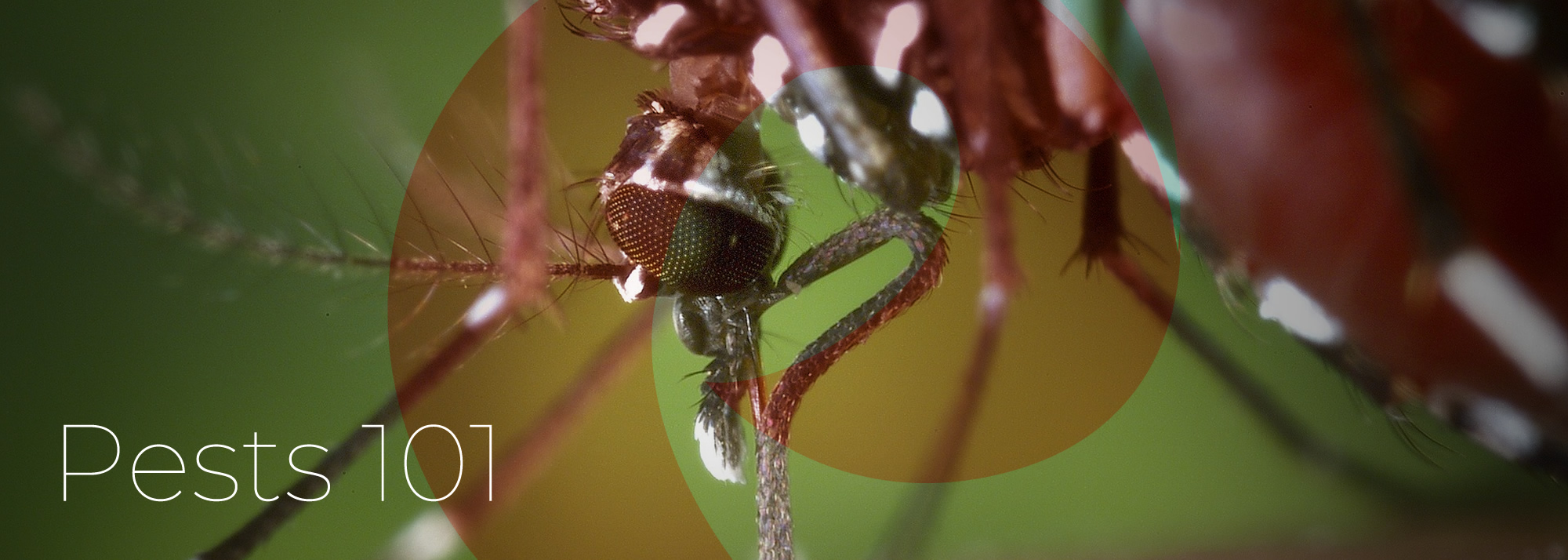Understanding Pests
In order to effectively treat and control pests, it is crucial to understand each individual organism and its biology.
Here's what you need to know.

Termites
Termites are social insects that practise the Caste System. Each colony consists of a queen, a king, soldiers, workers, alates and immatures (nymphs and eggs). Each of the caste members share similar body forms but separate and specific tasks. The queen and king are tasked for reproduction and egg-laying while the soldiers defend the colony from enemies. Alates will take part in swarming in order to mate and build new colonies. Successful survivors will be the future king and queen of the new or sub-colony. Workers are the busiest group who maintain, construct and repair the nest and mud trail and at the same time forage for food to feed the colony members.
Consequences
Termites usually enter into our premises through cracks and crevices, following piping and electrical systems. Termites forage for food from any item that contains cellulose i.e. books, photos, documents and more. It has been projected that Malaysia spends millions per year on termite management and the total repair cost for damages is approximately threefold of the total termite control cost.

Bed Bugs
Bed bugs are mainly active at night, but are not exclusively nocturnal and often hide inside cracks and crevices during the daytime. They are most active late at night and feed on their hosts without being noticed. Humans are their preferred hosts as it is easiest to feed on their bare skin while they are sleeping, with blood as their main source of food.
Consequences
Bed bug bites may cause allergic reactions such as irritation and inflamation of the skin. People lose sleep due to entomophobia (fear of insects) or have poor quality sleep because of itchiness caused by the bites. You may notice the presence of bed bugs through blood stains as well as their faecal spots, egg cases and cast skin, and even an unpleasant odour if the infestation is heavy.

Ants
Out of 22,000 species of ants, only 12,000 have been identified. They are easily identified by their elbowed antennae and distinctive node-like structure that forms their slender waists. Only 1% of the species are considered pests in the human environment. Ants can be severe irritants when they invade buildings and indoor spaces for food and nesting purposes.
Consequences
There are ant species similar to termites, which are carpenter ants. This type of ant can significantly damage your home as they are capable of destroying a house's structure bit by bit. Other side effects of untreated ant infestations include food contamination and wiring short circuits. In addition, species like pharaoh ants bite and leave painful, itchy and sometimes swollen marks on the skin.

Cockroaches
There are three species of cockroaches commonly seen in Malaysia – American, German and Brown-banded, with the American cockroach usually sighted in drainage systems, sewage tanks and flooring traps. German cockroaches are also known as “rich man” cockroaches due to their common breeding grounds and habitats being Food & Beverage outlets and hotels. Brown-banded roaches are those usually found crawling in and out of vehicles, inhabiting and breeding in moist and damp areas. An average cockroach can live up to a week without food, so long as they have a water source. Their life cycle comprises of three stages – ootheca (egg) to nymph and finally adult. A single ootheca can easily produce 14-44 nymphs.
Consequences
There is no specific disease directly brought on by cockroaches, but they are known carriers of millions of bacteria and infectious agents that can lead to an array of diseases, particularly diarrhoea and food poisoning. Cockroaches can also cause allergies – their saliva secretion and body parts contain hundreds of allergens that can trigger undesirable reactions including skin rashes, sneezing and watery eyes.

Mosquitoes
Mosquitoes are classified into two categories – the females, which have special tube-like mouthparts called proboscis used to penetrate hosts' skin to feed on their blood, and the males who solely seek plant nectar as a food source. Species that are commonly seen in Malaysia are Aedes, Culex and Anopheles. The life cycle of an average mosquito comprises of 4 stages – egg, larvae, pupa and adult, with each mosquito's lifespan being between 5-15 days depending on species. For Aedes, they last approximately 8-10 days and usually hatch in clean, stagnant water.
Consequences
Aedes mosquitoes are known to be dangerous to humans as they cause dengue fever, which damages the body's immune system and can be fatal. Mosquitoes also carry other viruses such as Zika and Chikungunya, transmitting them to humans through bites.

Flies
There are many species of flies, more common ones include the housefly, fruit fly, green bottle fly and blue bottle fly. The most unique part of their anatomy is their compound eyes with thousands of individual visual receptors, giving them a broad field of vision. Their mouthparts (commonly for houseflies) are used for mopping up food parts after being liquified by their saliva.
Consequences
Flies are hazardous insects that carry bacteria, viruses and diseases that can affect human health such as Cholera, Conjunctivitis, Salmonellosis and Tuberculosis. These bacteria are transmitted by flies either airborne or from contact with food, which can result in food poisoning and diarrhea.

Rats
There are two species of rats that are commonly seen in Malaysia – Norway Rat and Roof Rat. For a rat to mature and to be able to mate, it needs approximately 21 days. Though rats are commonly known as dirty creatures, they actually groom themselves by licking their bodies, just like cats. However, their fur is usually oily, which makes them easy to detect when they leave smear marks. Their droppings are also an indicator, and rat infestation levels or population can be gauged based on the amount of droppings.
Consequences
Rats can cause the disease known as Leptospirosis, which comes from the bacteria Leptospira that they carry and transmit through their urine. Leptospirosis is deadly as it causes failure of major organs, which leads to death. In addition, rats cause damage to humans and household items through biting.

Birds
When birds' habitat is disturbed, they will tend to migrate and nest elsewhere, usually in high places that provide ample shelter from weather elements to protect their young. Sometimes they may invade homes in areas like attics, decks, porches, sheds and chimneys.
Consequences
Bird-related diseases are often associated with pigeons, starlings and house sparrows that carry fungi and bacteria such as Histoplasmosis, Candidiasis, Cryptococcosis, Escherichia coli (E.coli) and Salmonellosis. These fungi and bacteria are a result of dried bird droppings and can lead to diseases that affect the skin, mouth and respiratory system. Dust from bird droppings can land on food and water supplies and can also contaminate food and cooking surfaces in restaurants, homes and food processing plants.

